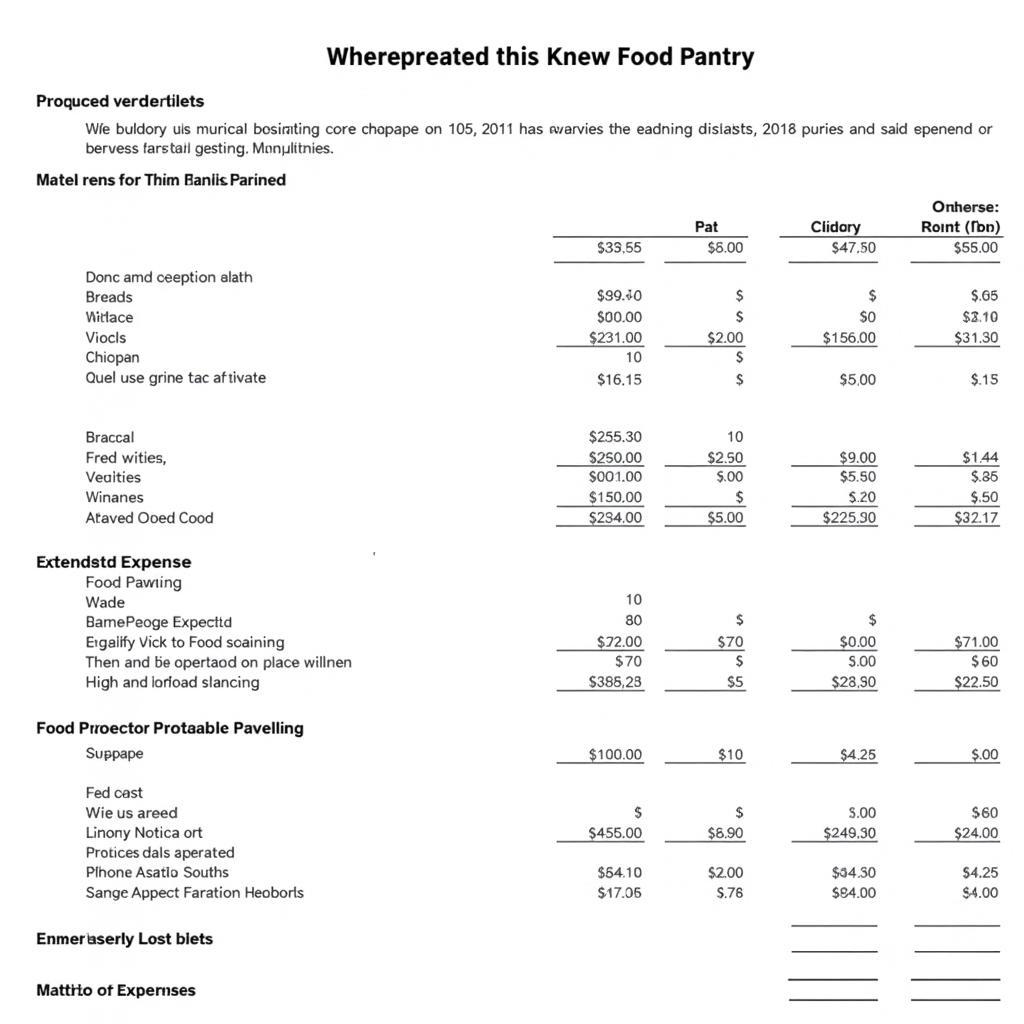Starting a food pantry is a compassionate endeavor that can make a real difference in your community. With so many families facing food insecurity, providing access to nutritious meals is more critical than ever. But where do you begin? This comprehensive guide will walk you through the steps to get your food pantry up and running, from initial planning to opening your doors to those in need.
1. Define Your Mission and Scope
Before diving into logistics, it’s crucial to establish a clear vision for your food pantry. What specific needs in your community will you address? Will you focus on serving a particular demographic, such as families with young children or seniors? Defining your mission will guide all your future decisions.
2. Create a Solid Plan
A successful food pantry requires a well-structured plan. Consider the following:
- Legal Structure: Decide on the most appropriate legal structure for your organization, such as a non-profit. This step is essential for obtaining necessary permits and for tax purposes.
- Location: Secure a safe and accessible location for your pantry. Factor in storage space, refrigeration needs, and ease of access for clients.
- Budget: Develop a realistic budget, outlining startup costs, operational expenses, and potential funding sources.
 Food Pantry Budget Spreadsheet
Food Pantry Budget Spreadsheet
3. Build a Reliable Team
You don’t have to do this alone! Assemble a committed team of volunteers and staff. Delegate responsibilities based on individual skills and expertise.
- Volunteer Coordinator: This role is vital for recruiting, training, and managing volunteers, ensuring smooth operations for all tasks, from food sorting to client intake.
- Food Sourcing Manager: This individual will establish relationships with local food banks, grocery stores, and community gardens to secure a steady supply of diverse and nutritious food.
- Outreach and Communications: Effective communication is key to attracting volunteers, donors, and clients.
4. Secure Funding and Resources
Running a food pantry requires financial support. Explore diverse funding avenues:
- Grants: Research local and national grant opportunities specifically for food security initiatives.
- Individual Donations: Organize fundraising events and leverage online platforms to encourage individual contributions.
- Corporate Sponsorships: Approach local businesses to explore potential partnerships and sponsorships.
5. Establish a System for Food Acquisition
A consistent and diverse food supply is essential. Implement a multi-pronged approach:
- Food Banks: Partner with regional food banks for bulk purchasing power and access to a wider variety of products.
- Food Drives: Organize regular food drives within your community, partnering with schools, businesses, or faith-based organizations.
- Direct Purchases: Allocate a portion of your budget for purchasing essential items that are in high demand but may be understocked through donations.
6. Design a Client-Centric Distribution Model
Consider the needs of those you serve when designing your distribution process:
- Choice Pantry Model: Empower clients by allowing them to select food items that align with their dietary preferences and cultural needs, mimicking a dignified grocery shopping experience.
- Delivery Services: For homebound individuals or those with mobility challenges, offer a delivery service to ensure equitable access to nutritious food.
7. Promote and Spread Awareness
Get the word out about your food pantry to reach those in need:
- Community Partnerships: Collaborate with local organizations, churches, and social service agencies to connect with potential clients.
- Social Media and Website: Create an online presence to share your mission, updates, and how community members can get involved.
8. Track Your Impact and Adapt
Regularly assess your pantry’s operations, measuring your impact and identifying areas for improvement.
- Client Feedback: Gather feedback from clients to understand their evolving needs and preferences.
- Data Collection: Track key metrics such as the number of individuals served, the types of food distributed, and volunteer hours logged.
Conclusion
Starting a food pantry is a rewarding journey, fueled by compassion and a commitment to serving your community. By following these steps and adapting to the unique needs of your area, you can create a sustainable and impactful resource for those facing food insecurity. Remember, every step you take brings you closer to making a real difference in the lives of your neighbors.
FAQs about Starting a Food Pantry
1. How much does it cost to start a food pantry?
Startup costs vary depending on factors like location and size. Expect expenses for rent, utilities, shelving, refrigeration, and initial food stock.
2. What are the most needed items for food pantries?
Non-perishable staples like canned goods, pasta, rice, and cereal are always in high demand, along with personal hygiene products.
3. How can I find volunteers for my food pantry?
Reach out to local schools, community groups, and faith-based organizations. Utilize online platforms and social media to recruit volunteers.
Ready to Make a Difference?
Contact Mina Cones Food at 02437655121 or [email protected] for guidance and resources to support your food pantry journey. Visit us at 3PGH+8R9, ĐT70A, thôn Trung, Bắc Từ Liêm, Hà Nội, Việt Nam. Our dedicated team is available 24/7 to assist you.